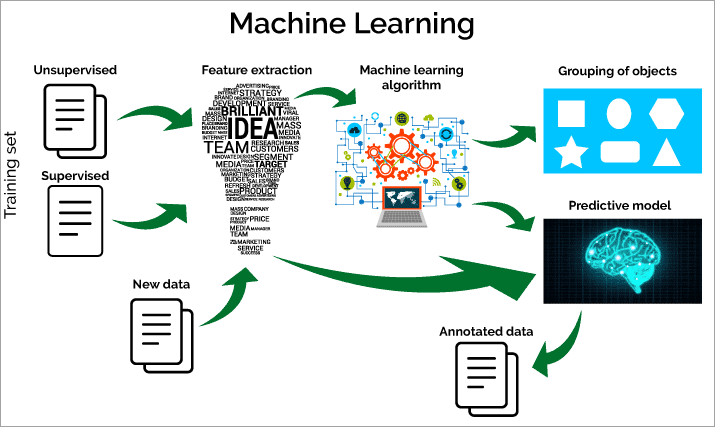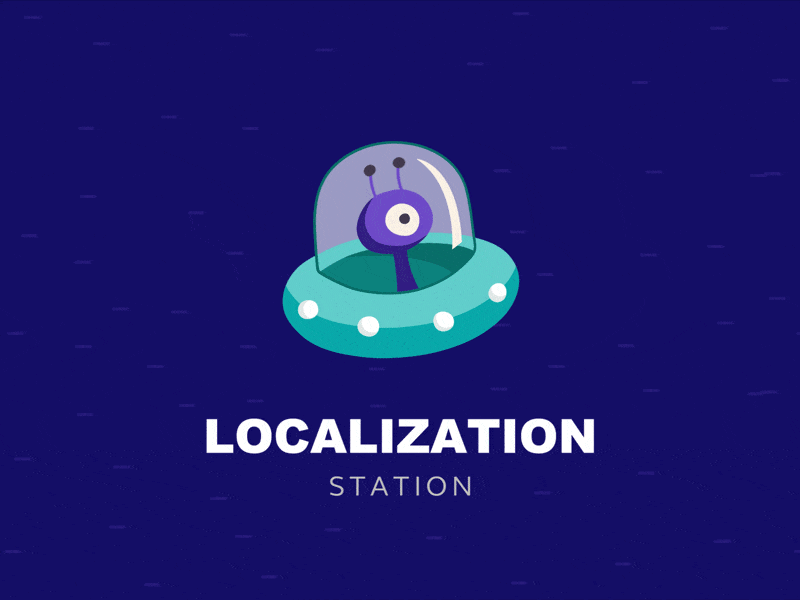Data collection methods example

Text data collection is important for 24x7Offshoring company.
She is working to offer the best text collection services to ensure the success of any computer vision project as part of the goal of becoming one of the world’s leading deep learning text data collection centers.
What are data collection methods?
Data collection methods are the different types of systematic processes to collect information from relevant sources in order to find answers to research problems.
Depending on the source from which they collect information, data collection methods can be divided into two categories: secondary methods and primary methods.
Primary data collection methods collect information directly, so it is source data. Secondary data collection methods extract information from existing repositories.
Data collection methods are the instruments used to obtain the information necessary for the research. It should be noted that not any of them can be used, but rather they depend on the question you are trying to answer.
Therefore, the methods are determined by the approach of the problem in relation to the topic of interest.
In all cases, we work on a population specificity on which a sample is defined.
That is, a representative portion of the study population. Once you have everything, you can define the aspects or dimensions on which the investigation is based.
The first thing to determine is whether the research will be quantitative, qualitative or mixed.
With quantitative methods of collecting information, it is possible to know the number of times a phenomenon occurs or the frequency with which a word is used, for example.
Qualitative methods, however, serve to understand the opinions, motives and motivations of people who express their personal opinion.
These methods help examine the reasons for decision-making and develop hypotheses for subsequent quantitative research, and are very useful in companies to verify the degree of customer satisfaction or points for improvement.
Finally, mixed research involves the collection of quantitative and qualitative data to make inferences about the information collected. In this way, a broader and deeper perspective on the research topic is achieved.
Primary data collection methods

These methods focus on obtaining primary data and are collected through first-hand experience, rather than available information generated in the past.
As a result, they provide specific, highly authentic and accurate information.
Primary data collection methods can be divided into two categories: quantitative methods and qualitative methods.
• Surveys:
Surveys are used to collect data from the target audience and collect information about their preferences, opinions, choices and comments related to your products and services.
There are traditional paper surveys and online surveys.
Most survey creation programs often offer a wide range of question types to select from.
You can also use a ready-made survey template to save time and effort. Online surveys can be customized to the company’s brand by changing the theme, logo, etc.
There are various methods of survey distribution, such as via email, website, offline application, QR code, social networks, etc. Depending on the type and source of your audience, you can select the channel.
• Polls:
The surveys consist of a single or multiple choice question. When you need to have a quick pulse of the audience’s feelings, you can use a poll creator. Because they are short in duration, it is easier to get responses from people.
They can also be integrated into various platforms. Once respondents answer the question, they can also be shown how they fare compared to others’ answers.
• Statistical methods
Statistical methods are generally used to make long-term forecasts. They are highly reliable, since the element of subjectivity is minimal. Some examples of these methods are:
• Chronological or time series analysis: The term refers to a sequential order of values of a variable, known as a trend at equal time intervals.
Using trends, an organization can predict the demand for its products and services for the projected time.
• Smoothing techniques: In cases where the time series lacks significant trends, smoothing techniques can be used to eliminate a random variation in historical demand.
This helps identify demand patterns and levels that can be used to estimate future demand.
The most common methods used in demand forecast smoothing techniques are the simple moving average method and the weighted moving average method.
• Barometric Method: Also known as the leading indicators approach, this method is used to speculate on future trends based on current developments.
When a past event is considered to predict the future event, the past event would act as a leading indicator.
Qualitative primary data collection methods
Qualitative data collection methods are especially useful in situations where historical data is not available, numbers or mathematical calculations are not needed.
Qualitative research is closely related to words, sounds, feelings, emotions, colors and other elements that are not quantifiable.
These methods are based on experience, judgment, intuition, guesses, emotions, etc.
Quantitative data collection methods do not provide the reason for participants’ responses, often do not reach underrepresented populations, and can span long periods of time to collect data.
Therefore, it is better to combine quantitative methods with qualitative methods.
These are some of the qualitative methods of collecting primary data:
• Interviews
In the interview method, the interviewer asks questions face to face or over the telephone to the respondents. In face-to-face interviews, the interviewer asks the interviewee a series of questions in person and writes down the answers.
Like the survey, the interview may have a questionnaire, which may vary in terms of flexibility depending on the type of interview in question (structured, semi-structured or unstructured).
If it is not possible to know the person, the interviewer can rely on a telephone interview.
Unlike the other data collection methods, this is suitable when the research sample is small, as it is too long and tedious to repeat the same process if there are many participants.
• Observation
Observation is one of the most viable data collection methods to implement, since it can be done simply by going to the place where the situations you seek to investigate naturally occur.
The researcher can opt for participant observation, where he acts directly on the events, or non-participant observation, where he remains outside the events that occur.
• Focus Group
The focus group is another data collection method and technique where a small group of people, around 8-10 members, meet to discuss common problem areas with a moderator who regulates the discussion.
Each participant contributes their points of view on the topic in question. At the end of the discussion, the group reaches a consensus.
• Delphi technique
In the Delphi technique, market experts receive estimates and assumptions from forecasts made by other industry experts. They may reconsider and revise their own estimates and assumptions based on the information provided.
• Qualitative survey
The qualitative survey is a data collection method that allows you to use open questions and qualitative analysis techniques to identify themes, feelings, opinions and other aspects of the respondents’ experience.
It is generally used in an initial phase of a mixed investigation to have a first approximation that can generate hypotheses.
Secondary data collection methods

Secondary data collection methods are those that focus on data that has been used in the past.
These types of methods are used in desk research, where the researcher can obtain data from sources both internal and external to the organization.
Internal sources of secondary data:
• Health and safety records of the organization
• Mission and vision statements
• Journals
• Sales report
• CRM Software
• Executive summaries
External sources of secondary data:
• Government reports
• Press releases
• Business magazines
• Libraries
• Internet
Secondary data collection methods may also include quantitative and qualitative techniques. These are easily available and therefore less time-consuming and expensive compared to primary data.
However, in the case of secondary data collection methods, the authenticity of the collected data cannot be verified.
Survey: one of the most common data collection methods
This is a series of questions aimed at the participants. Thus, these can be carried out in person, via email, by mail or by telephone. Furthermore, it can be directed at an individual or a group.
Regarding their formulation, they can include multiple options or open questions. The latter refer, for example, to demographic information, health status, opinions, beliefs, skills, etc.
Interview
This tool is one of the best known among the data collection methods for research.
Then, it refers to an interaction that involves the researcher and a participant (or several). Like the survey, it can be administered in person, by mail, telephone, or electronically.
Thus, during an interview, questions are asked based on the detailed information that is to be collected.
Therefore, the type of questions is similar to that of a survey, but focused on more specific aspects or to obtain more concrete data.
Proof
A test is a physical or mental task for which a normal standard has been determined or for which the correct answers are known in advance. In this way, the participant’s performance is measured and compared to parameter standards and correct responses.
Consequently, they are used to specify the aptitudes, skills, certain knowledge or the state of physical and/or mental health of the person participating. All based on the comparison with the general population.
Some examples are academic performance tests at a university or technical tests intended for a specific job position. Like the previous ones, they admit all types of modalities: in person, electronically, telephone or mail.
Physiological evaluations
These types of evaluations are constituted as metrics where the physical characteristics of a participant or group are recorded. For example, blood pressure, heart rate or physical strength, among others.
In general, they are used in health research to determine the status of an individual or several, before, during or after a study.
Observation as a data collection method
Observations are made up of recorded records that do not require participation. That is, the data is taken while people are carrying out their routine activities.
Therefore, they are used as indicators of what the participants do and not their stories. An example could be an anthropologist participating in some ritual in a specific community.
Log Review
This type of data collection method for research is carried out when a researcher examines and extracts information from documents that contain information about the participant.
A
dditionally, these records can be public or private. We can cite as an example the case of a researcher who consults medical records to find data about a disease.
Biological samples
Biological samples are substances taken from a person for the measurement of physiological information. For example, a sample of blood, saliva or urine to determine the content of some element in relation to a pathology.
Advantages of collecting data
The advantages of collecting data in a company are varied, the most notable being the following:
• It is possible to understand quantitative and qualitative data more simply to make decisions.
These decisions may be related to the company’s business strategy, the advancement of the competition, or the performance of workers. It is also possible to verify with certainty the impact of setting new objectives or managing human capital.
Current tools allow companies to identify patterns and trends, thus knowing the degree of customer satisfaction by understanding their habits and preferences.
Data collection can serve as a way to store and process large volumes of data much more efficiently and cost-effectively than traditional systems.
• The information obtained can be useful for tracking the performance of a product over time, giving the company a competitive advantage in its marketing strategies.
This contributes to reputation and long-term success through increased customer loyalty.
• It is useful for designing and developing customized products and targeting them at specific segments.
The data collected can help companies identify tastes and customs of their buyers, which significantly facilitates the process of redesigning the offer in time, money and effort.
Data collection instruments

Data collection instruments are the elements used digitally or physically to collect the information required by the company. Next, we are going to show you a list of the most used tools today, let’s get started:
Data collection instruments for marketing
Data collection instruments are essential for collecting valuable information that helps better understand the market, customer behavior, and how the company’s products are developed.
This data is used to find new ways to promote and sell the service, improve customer satisfaction, and even increase sales.
Among the most common data collection instruments are: surveys, market studies, monitoring of user behavior and descriptions of age groups, among others.
What must be taken into account is that the tools chosen must be useful to obtain information about customer taste, buyer profile and purchasing patterns and, on the other hand,
serve to create marketing campaigns. more effective and adapt products to demand.
Keep in mind that you can choose the tool that best suits your business or research.
Finally, data collection instruments are also useful for measuring the success of a marketing campaign because they allow us to know what strategies work and how they can be improved.
It helps measure customer satisfaction with the company’s products and services and identify areas to optimize processes.
The implementation of AI will impact important investments in infrastructure,
software, equipment, and processes.
The generation of knowledge, captured in the data we store, is a necessarily human activity.
Data are cold, solitary entities, inherently ambiguous unless a context of interpretation is generated around them.
The generation of this context is precisely the purpose of the activities included in the generic concept of “Data Governance”.
Data Governance is the process in which data is treated as monetizable assets and should not be confused or limited to the disciplines that address security and privacy.
In addition to addressing security and privacy, Data Governance addresses the unification of the meaning of data for the entire business, generating a single source of truth.

This work will provide consistency to the results obtained from AI, which will allow explainability and improve the stability of analytical processes over time.
Furthermore, Data Governance will deal with Master Data Management which will include attributes of master entities that are dispersed in different systems and subsystems.
This work will guarantee the correct construction of what is known as the 360 Vision of the entities.
The integration will facilitate secure and credible access to the descriptors of the main actors (customers, suppliers, products, etc.).
Without Master Data Management it is impossible to build the context that allows us to correctly interpret the meaning, role, usefulness and value of the data we collect in order to reduce its ambiguity.
Artificial intelligence (AI) is a discipline made up of techniques that allow machine learning based on data exploration and analysis.

24x7offshoring offers comprehensive Artificial Intelligence for Business Applications services, employing cutting-edge AI technologies to improve productivity, automate tasks, and provide data-driven insights, enabling businesses to stay competitive in a 24/7 global marketplace.
Fully managed data collection services
Since data is of utmost importance to the success of any organization, it is estimated that, on average, AI teams spend 80% of their time preparing data for AI models. This data preparation usually includes several steps such as:
Identify the required data
Identify data availability
Profile the data
Data origin
Integrating the data
Cleaning the data
Data preparation
Using data collection tools managing a global workforce of data collectors to collect training data for AI projects.
Drawing from a wide variety of age groups, demographics, and educational backgrounds, they serve to help collect large volumes of machine learning data sets to meet the most demanding AI initiatives.









